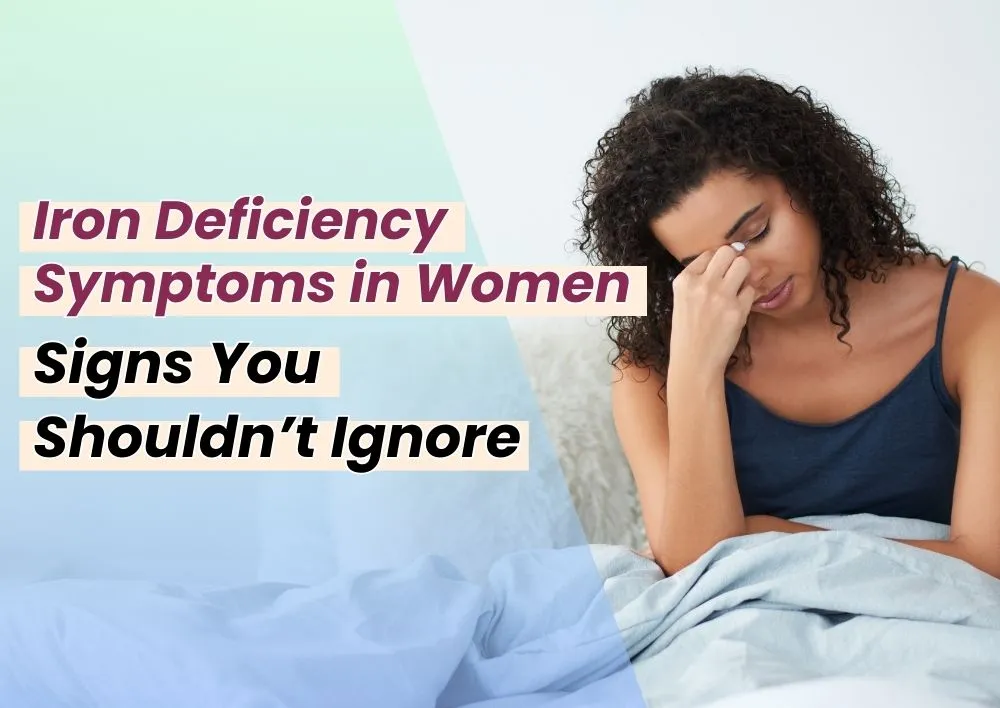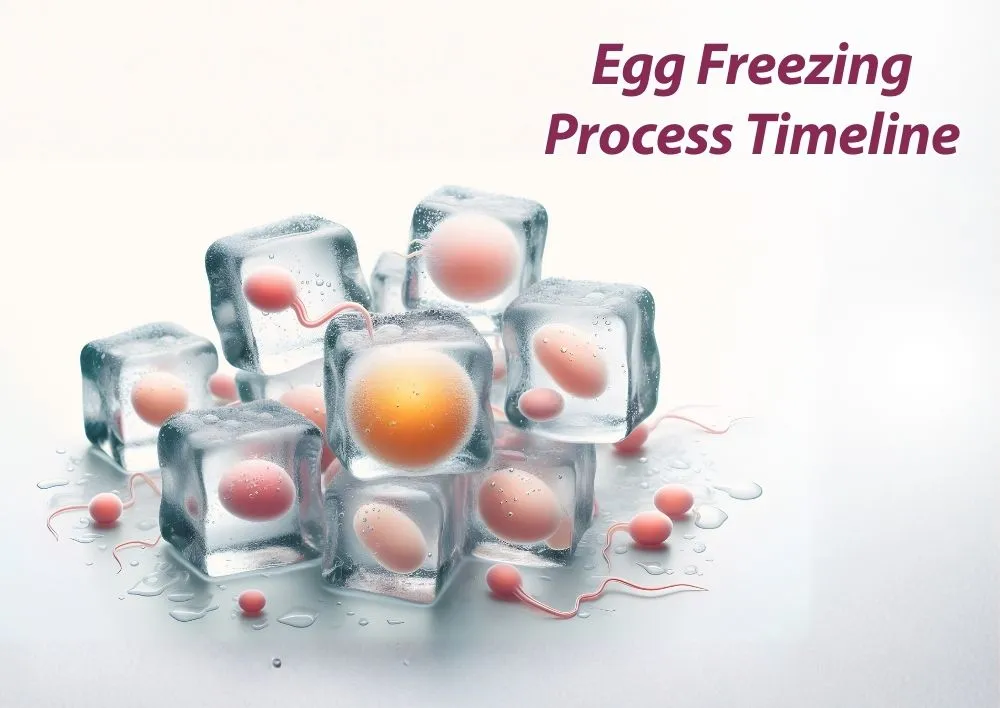Iron Deficiency Symptoms in Women: Signs You Shouldn’t Ignore
Summary
Iron deficiency is one of the most common nutritional deficiencies among women worldwide. It occurs when your body does not have enough iron to produce hemoglobin, a protein in red blood cells that carries oxygen to your tissues. Without sufficient iron, your organs and muscles don’t get the oxygen they need, leading to fatigue and other health problems.
In females, iron deficiency is more common because of factors such as menstruation, pregnancy, and certain dietary habits. Early recognition of the symptoms is important to prevent complications like anemia.
In this blog, we will explore the common symptoms of iron deficiency in women, why it happens, and when to seek medical advice.
Common Symptoms of Iron Deficiency in Women
Iron deficiency often progresses gradually, making it easy for women to miss the initial warning signs. Here are some of the most common symptoms to watch for:
1. Constant Fatigue and Weakness
Feeling constantly tired, even after enough sleep, is one of the earliest and most noticeable signs of iron deficiency. Since hemoglobin levels are low, the body struggles to transport oxygen efficiently, making you feel drained and weak.
According to Dr. Ajay Kaushik, renowned general physician in Gurgaon at Miracles Healthcare, “Women with iron deficiency usually complain of persistent fatigue and lack of stamina. This happens because their muscles and tissues are not receiving adequate oxygen, which directly affects daily energy levels.”
2. Pale or Yellowish Skin
A lack of iron can make your skin look pale. Hemoglobin gives blood its red color, so when levels drop, the skin loses its healthy glow. Paleness is most commonly seen on the face, the inner eyelids, and the fingernails.
3. Shortness of Breath
If you often feel breathless while climbing stairs or doing regular activities, it could be because of an iron deficiency. Without enough oxygen circulating in your blood, even small tasks may leave you gasping for air.
4. Headaches and Dizziness
Insufficient oxygen reaching the brain may lead to recurring headaches, dizziness, or a feeling of lightheadedness. Females with iron deficiency usually complain of these issues, especially during physical activity or long working hours.
5. Hair Loss and Brittle Nails
Iron is important for healthy hair and nails. Deficiency can cause excessive hair shedding, thinning, and brittle nails that break easily. Some females may also notice spoon-shaped nails, which are a classic sign of anemia.
6. Cold Hands and Feet
Poor blood circulation caused by low hemoglobin may leave your hands and feet feeling cold, even in warm weather.
7. Chest Pain or Rapid Heartbeat
In severe cases, your heart has to work harder to pump oxygen-rich blood throughout the body. This may cause a fast heartbeat, palpitations, or even chest discomfort.
8. Cravings for Non-Food Substances
Some females with severe iron deficiency develop unusual cravings for non-food items such as ice, clay, dirt, or paper. This condition is known as pica and is strongly connected to iron deficiency.
9. Restless Legs Syndrome
Another lesser-known symptom is restless legs syndrome, where women feel uncomfortable sensations in their legs and an uncontrollable desire to move them, especially at night.
10. Poor Concentration and Brain Fog
Iron deficiency affects mental function. Many women report difficulty focusing, memory issues, or a general feeling of brain fog when their iron levels are low.
Why Are Women More Prone to Iron Deficiency?
Women are at higher risk of iron deficiency compared to men. Here are the main reasons:
-
Menstrual blood loss – Heavy or prolonged periods can cause significant iron loss.
-
Pregnancy – During this phase, the body requires higher amounts of iron to nourish both mother and baby.
-
Diet – Consuming fewer iron-rich foods can reduce the body’s iron levels and cause a deficiency.
-
Health conditions – Issues like fibroids, gastrointestinal bleeding, or ulcers can also reduce iron levels.
Iron Deficiency Prevention and Treatment
Iron deficiency can often be prevented and treated with the right diet and medical care.
Iron Deficiency Prevention
-
Women can take preventive steps to maintain healthy iron levels:
-
Eat a balanced diet with iron-rich foods.
-
Take prenatal vitamins during pregnancy.
-
Go for regular health check-ups to monitor hemoglobin.
-
Manage menstrual health with medical guidance.
Iron Deficiency Treatment
The treatment depends on the severity of the deficiency. Here are the most recommended approaches:
1. Dietary Changes
-
Adding iron-rich foods to your daily meals can naturally boost levels.
-
Non-Veg. Iron Sources: Lean red meat, chicken, turkey, fish.
-
Veg. Iron Sources: Spinach, kale, beans, lentils, tofu, fortified cereals, nuts, seeds.
-
Foods rich in vitamin C, like oranges, strawberries, and tomatoes, enhance the body’s ability to absorb iron more effectively. Avoid Excess Tea/Coffee, as they reduce iron absorption.
2. Iron Supplements
Doctors usually prescribe iron tablets or capsules if diet alone is not enough. Take them as directed, as excess iron can cause constipation or stomach upset.
3. Intravenous (IV) Iron Therapy
In severe cases, especially if oral supplements don’t work, iron is given directly through IV infusion.
4. Treating Underlying Causes
If heavy menstrual bleeding, fibroids, ulcers, or chronic illnesses are causing iron loss, your doctor may recommend additional treatments or procedures.
When to See a Doctor?
If you experience ongoing fatigue, dizziness, or breathlessness, don’t ignore it. Early diagnosis and treatment can prevent complications. Women with heavy menstrual cycles or during pregnancy should be especially vigilant.
Conclusion:
Iron deficiency in women is common but treatable. By recognizing symptoms early, making smart dietary choices, and seeking medical care, you can restore your energy and overall health. If you are experiencing any of the symptoms of iron deficiency, consult a general physician near you for proper diagnosis and treatment.
Frequently Asked Questions
Iron deficiency can lead to various health problems, including severe anemia, fatigue, cardiovascular issues, pregnancy complications, and a weakened immune system.
Frequent tiredness, pale skin, brittle nails, hair loss, and dizziness may indicate a low iron level.
Tiredness, weakness, pale skin, dizziness, shortness of breath, rapid heartbeat, cold hands or feet, brittle nails, headaches, and poor concentration.
Intense fatigue, chest pain, irregular heartbeat, fainting spells, and difficulty breathing are the red flags of iron deficiency.
You may experience headaches, chest pain, muscle pain, and overall body weakness.
Yes, iron deficiency can reduce the supply of oxygen to hair follicles, leading to thinning and hair fall.
A pregnant woman needs about 27 mg of iron per day.
Eat iron-rich foods, take supplements, and seek medical treatment if anemia is severe.
Eat iron-rich foods such as green leafy veggies, meat, and lentils, take iron supplements, and pair with vitamin C for better absorption.
You can consult the expert general physicians at Miracles Mediclinic, Gurgaon, for accurate diagnosis and effective treatment.















Was the information useful?
1 0